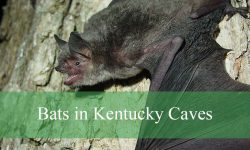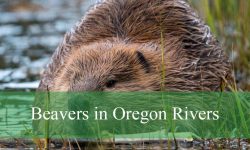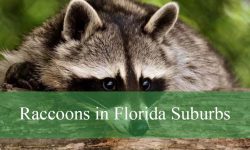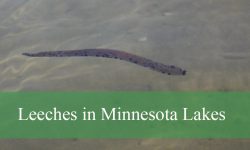There’s something magical about spotting a hummingbird in Utah’s wild landscapes. The first time I saw one darting between wildflowers in the Wasatch Mountains, its wings beating so fast they blurred, I felt as if I had stumbled upon a tiny jewel in flight. These birds are not just beautiful; they are full of energy and personality.
Utah is one of the best places in the West to encounter hummingbirds, thanks to its rich mix of mountains, valleys, and desert canyons. From the fiery Rufous to the delicate Calliope, each species brings its own story, colors, and behaviors. Some are common backyard visitors, while others are rare wanderers you’ll feel lucky to see even once.
In this guide, we’ll explore 11 types of hummingbirds you can find across Utah, complete with pictures and identification tips. Whether you’re a casual birdwatcher or a dedicated birder chasing rarities, you’ll discover when and where to see these remarkable little fliers up close.
Types of Hummingbirds Found in Utah
Broad-tailed Hummingbird
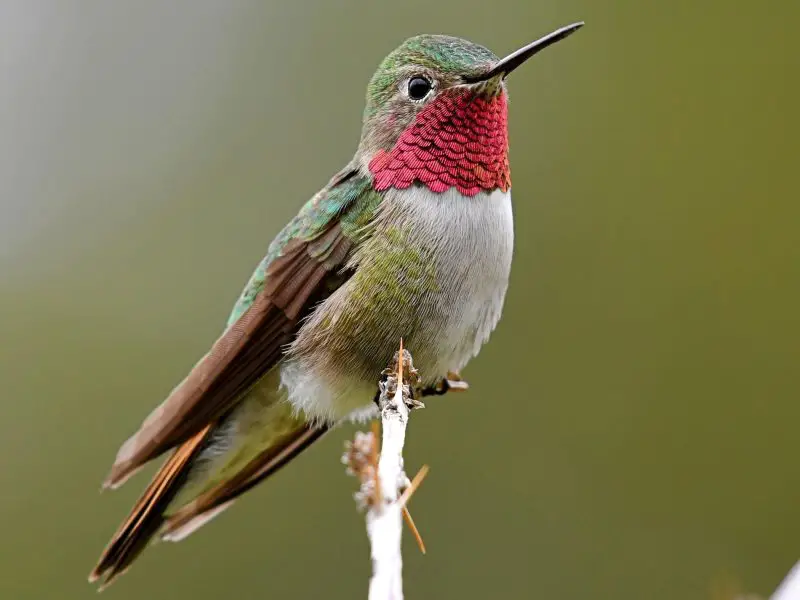
The Broad-tailed Hummingbird is one of the most common hummingbirds found in Utah, especially in mountainous regions. Males are easily recognized by their shimmering rose-red throats, while females and juveniles display a more subdued green and white plumage. Their wings produce a distinct trilling sound in flight, making them noticeable even before they are seen. Adults typically measure about 3.5 to 4 inches in length and weigh only 2.5 to 4 grams.
These hummingbirds thrive in open woodlands, alpine meadows, and forest edges across Utah, particularly at higher elevations. They are known for their seasonal presence, arriving in spring to breed and migrating south to Mexico and Central America for the winter. Their adaptability to mountain habitats makes them a key pollinator for many high-altitude flowers.
In terms of feeding, Broad-tailed Hummingbirds consume nectar from wildflowers as well as sugar water from backyard feeders. They also feed on small insects and spiders, which provide essential proteins. Males are territorial and will aggressively defend feeding spots, especially during breeding season.
A fun fact about this species is that during cold nights in Utah’s mountains, Broad-tailed Hummingbirds can enter a state of torpor. This temporary hibernation-like condition helps them conserve energy and survive temperatures that dip near freezing.
Black-chinned Hummingbird

The Black-chinned Hummingbird is another widespread species in Utah, especially in valleys, desert canyons, and suburban areas. Males can be identified by their striking black throats with a thin band of iridescent purple at the base, while females are pale underneath with green backs. Measuring around 3.25 inches long, they are small but incredibly agile fliers.
These hummingbirds are well adapted to Utah’s varied habitats, from riparian corridors to backyard gardens. They migrate north in spring from Mexico and Central America, breeding in Utah during the warmer months. By late summer, they begin their long journey south again. Their preference for areas near water sources makes them frequent visitors in cities and towns.
Their diet primarily consists of nectar from tubular flowers, but they also catch insects midair or pluck them from spider webs. Males often perform elaborate courtship dives, rapidly ascending and then diving steeply while making mechanical sounds with their wings and tail feathers.
A fascinating fact is that despite their tiny size, Black-chinned Hummingbirds are long-distance travelers. Some individuals have been tracked migrating more than 2,000 miles between their breeding and wintering grounds.
Rufous Hummingbird
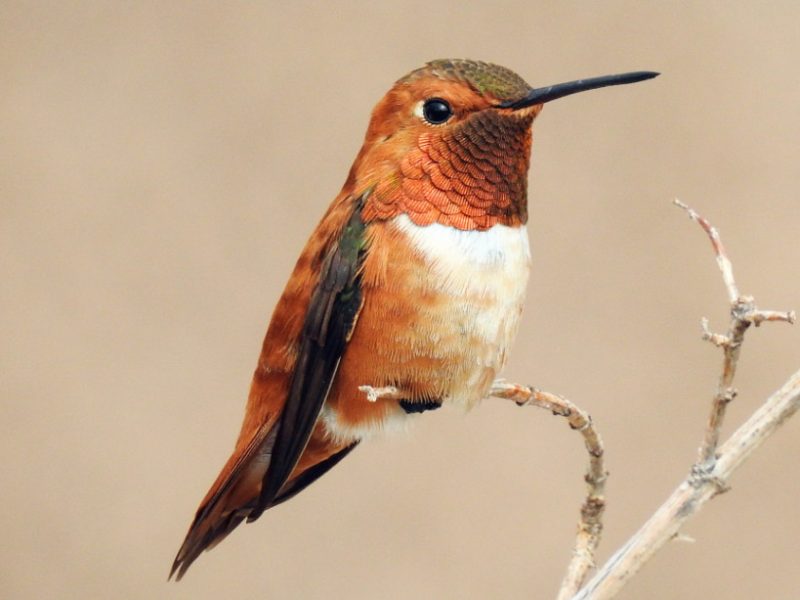
Rufous Hummingbirds are known for their fiery personalities and striking colors. Males are easily identified by their bright orange-red plumage and iridescent red throat, while females display greenish backs with rust-colored sides and tails. At about 3 inches long, they are slightly smaller than some other hummingbirds but exceptionally aggressive.
These birds are famous for their relentless territorial defense. In Utah, they are most often seen during migration as they travel from breeding grounds in the Pacific Northwest and Alaska to wintering areas in Mexico. They frequently stop at feeders across Utah, where they often chase away other hummingbirds, regardless of size.
Rufous Hummingbirds feed on nectar from wildflowers and backyard feeders, but they also consume insects for protein. Their memory is remarkable; they can recall individual flowers and feeders along their migration route. This ability ensures they can refuel efficiently on their long journey.
A fun fact about Rufous Hummingbirds is that, pound for pound, they are considered one of the toughest migratory birds. Despite their tiny size, they complete a migration route of up to 4,000 miles each year, one of the longest migrations of any bird species relative to body size.
Calliope Hummingbird
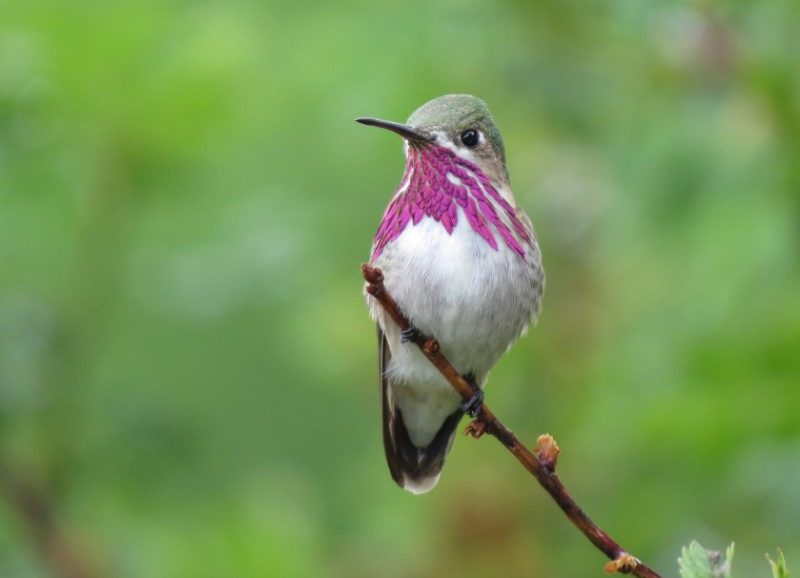
The Calliope Hummingbird is the smallest bird species found in the United States, measuring only about 3 inches in length and weighing less than a penny. Males are stunning with their streaked magenta throat feathers that fan outward like rays, while females are green above and pale below with subtle peachy sides. Their delicate size makes them a remarkable sight in Utah’s mountains and valleys.
They breed in the mountainous regions of the western U.S., including Utah, often choosing forest edges and alpine meadows. Despite their tiny stature, they undertake an impressive migration, wintering as far south as Mexico and Central America. In Utah, they are most common during the summer months.
Calliope Hummingbirds feed primarily on nectar from small flowers, which matches their petite bill size. They also consume insects, which are caught in midair or gleaned from vegetation. Males are known for performing aerial displays during courtship, often hovering in front of females while flaring their brilliant throat feathers.
A fun fact is that Calliope Hummingbirds hold the record as the smallest long-distance migratory bird in the world. Their journey of thousands of miles each year is an extraordinary achievement for such a tiny creature.
Anna’s Hummingbird

Unlike most hummingbirds in Utah, Anna’s Hummingbirds are more commonly associated with the West Coast but have been increasingly spotted in Utah, especially during migration. Males are distinguished by their iridescent rose-pink throats and crowns, which glow brilliantly in the sunlight, while females have green backs and lighter undersides with some reddish spotting on the throat. They are slightly larger than other hummingbirds in Utah, averaging about 4 inches long.
These birds are more adaptable to human environments compared to other species. They frequent gardens, parks, and suburbs, and they may be seen year-round in some parts of the western U.S. In Utah, sightings are most common during migration or in winter months when some individuals stray inland.
Their diet consists mainly of nectar, but they also hunt insects for protein. Males perform spectacular courtship displays by climbing high into the air and then diving steeply with a sharp chirping sound created by their tail feathers. They are known to be bold and curious, often approaching people more closely than other hummingbird species.
A fun fact is that Anna’s Hummingbirds are one of the few hummingbird species that can sing. Their song is a series of scratchy, metallic notes, which is unusual among hummingbirds, most of which rely only on calls and mechanical sounds.
Costa’s Hummingbird
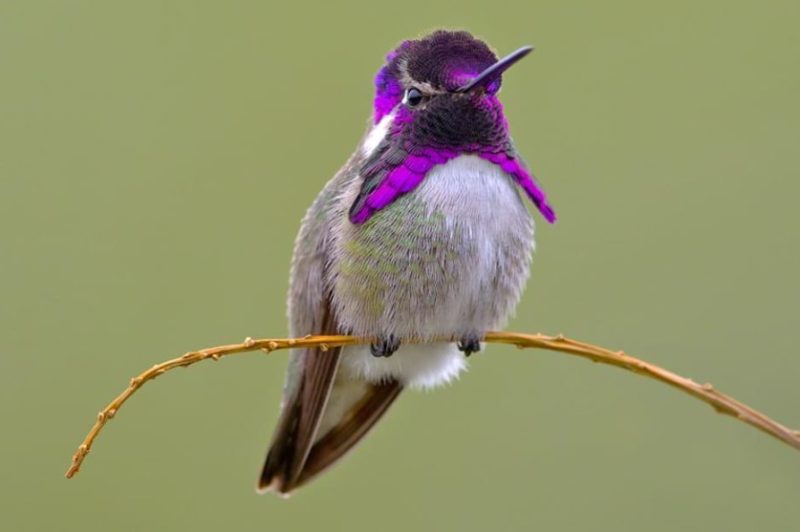
Costa’s Hummingbird is a small desert species that can occasionally be spotted in Utah, particularly in the southern regions. Males are instantly recognizable with their dazzling purple crown and throat feathers that flare out like a mustache, while females are more subdued with green backs and pale underparts. At just about 3 to 3.5 inches long, they are among the smaller hummingbirds found in the state.
Their preferred habitat includes arid deserts, scrublands, and dry washes. While they are more common in the southwestern United States, some individuals expand their range into Utah during migration or seasonal wandering. These birds are especially suited for hot, dry climates where few other hummingbirds thrive.
Costa’s Hummingbirds feed on nectar from desert flowers, often timed with blooming cycles in spring. They also eat small insects for protein, which are caught on the wing or picked from plants. Males perform dramatic display flights during courtship, swooping in U-shaped patterns while making high-pitched calls.
A fun fact is that Costa’s Hummingbirds are among the earliest breeders in North America. In desert areas, they may begin nesting as early as February, timing their reproduction with the seasonal abundance of wildflowers.
Allen’s Hummingbird

Allen’s Hummingbird is a striking species that occasionally passes through Utah during migration. Males have bright orange plumage with a shimmering red throat, resembling Rufous Hummingbirds, but they can be distinguished by their slightly greener backs. Females are green above with orange flanks and tails, making identification more subtle. They are small birds, typically measuring about 3 to 3.5 inches long.
This species breeds mainly along the Pacific Coast but migrates inland through the western U.S., where Utah serves as a stopover point for some individuals. They prefer coastal scrub, forest edges, and gardens but will also use mountain meadows during migration. Their brief appearances in Utah are often noted in spring and late summer.
Feeding behavior includes sipping nectar from tubular flowers, especially red or orange blossoms. They also supplement their diet with insects, which are captured in flight or taken from webs. Like Rufous Hummingbirds, Allen’s are highly territorial and will aggressively defend their feeding areas.
A fun fact is that Allen’s Hummingbirds are so similar to Rufous Hummingbirds that even experienced birders sometimes struggle to tell them apart. The two species are often identified by subtle differences in tail feathers and back coloration.
Blue-throated Mountain-gem

The Blue-throated Mountain-gem is the largest hummingbird regularly found in the United States, and rare sightings have been recorded in Utah. Males are easily recognized by their glittering sapphire-blue throats and large size, reaching about 5 inches in length. Females are duller with gray underparts but still noticeably larger than other hummingbirds in the region.
These hummingbirds are usually associated with mountain canyons, especially near streams and shaded forests. In Utah, they are considered rare vagrants, appearing mostly in the southern parts of the state. Their size and calm demeanor often make them less aggressive than smaller hummingbirds, though they can still defend feeders.
Their diet consists of nectar from a wide variety of flowers, but they also rely heavily on insects, which provide essential nutrients. Blue-throated Mountain-gems often perch quietly for long periods, unlike the constant darting of smaller hummingbirds. Their wingbeats are slower and produce a deeper humming sound.
A fun fact is that Blue-throated Mountain-gems are the only hummingbirds in the U.S. with prominent white tail tips, a feature that makes them easy to identify even at a distance.
Rivoli’s Hummingbird (Magnificent Hummingbird)
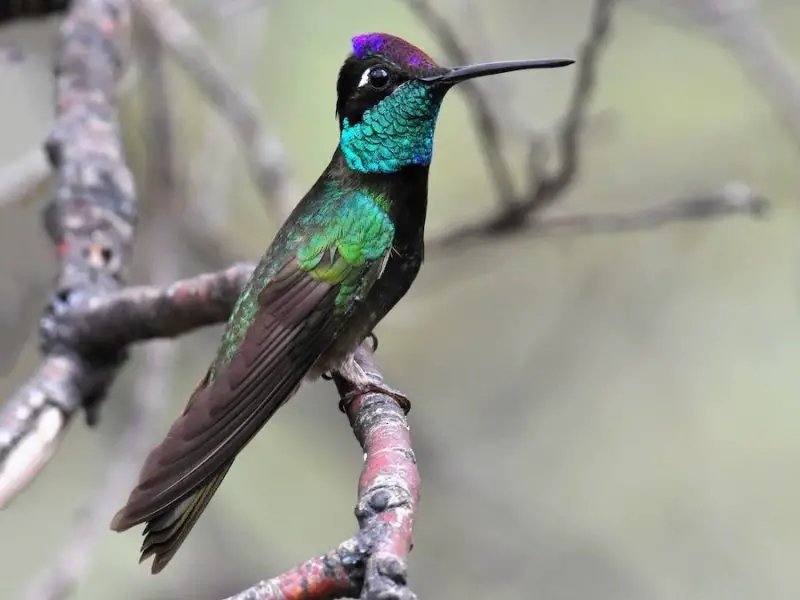
Rivoli’s Hummingbird, formerly known as the Magnificent Hummingbird, is another rare but spectacular visitor to Utah. Males display an iridescent emerald-green throat and a violet crown, making them one of the most stunning hummingbirds in North America. Females are green above and grayish below, less flashy but still elegant. They are large hummingbirds, measuring around 5 inches long.
They inhabit montane forests and shaded canyons, especially in the southwestern U.S. In Utah, sightings are scarce but have been documented in southern mountain ranges. Their preference for high-altitude habitats makes them less likely to be seen in backyards compared to other species.
Feeding habits include visiting nectar-rich flowers, as well as taking insects from midair or foliage. Males often perch high on trees to survey their territory. Despite their size, they are not as aggressive as Rufous or Allen’s Hummingbirds, often allowing smaller species to feed nearby.
A fun fact is that Rivoli’s Hummingbirds have some of the largest hearts relative to body size among birds—nearly 2.5% of their body weight. This adaptation allows them to sustain rapid wingbeats and high metabolism during flight.
Lucifer Hummingbird

The Lucifer Hummingbird is a striking desert species that occasionally wanders into Utah. Males are recognized by their long, decurved bills and brilliant purple throats, while females are greenish above with buff-colored underparts. Their distinctive shape, with a slightly curved bill and long tail, sets them apart from other hummingbirds in the region.
They are typically found in desert habitats with agave and ocotillo plants, which provide abundant nectar. In Utah, they are considered rare visitors, most often appearing in the southern deserts and canyon regions. Their preference for arid landscapes makes them well adapted to extreme conditions.
Lucifer Hummingbirds feed primarily on nectar, using their long bills to reach into tubular flowers that other hummingbirds cannot access. They also eat insects for protein, often gleaning them from plants or catching them mid-flight. Males are known for performing looping aerial displays to attract females.
A fun fact is that the Lucifer Hummingbird’s scientific name, Calothorax lucifer, references the “light-bearer,” a nod to its brilliantly shining gorget that glitters like fire in sunlight.
Broad-billed Hummingbird
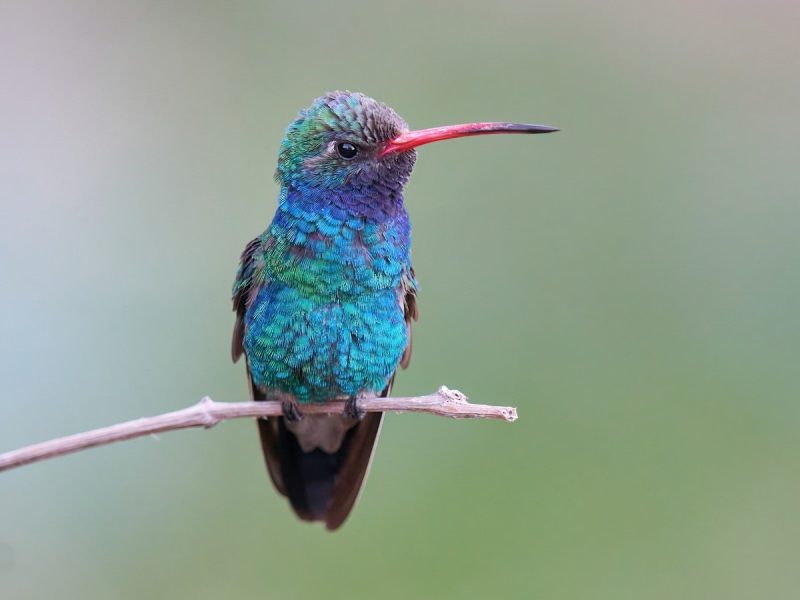
The Broad-billed Hummingbird is one of the most colorful hummingbirds to occasionally appear in Utah. Males are unmistakable with their bright turquoise-blue throats and bodies, paired with a vivid red bill tipped in black. Females are plainer, with green upperparts and grayish underparts, but both sexes share the characteristic red bill. They are medium-sized, about 3.5 to 4 inches long.
This species is most common in Mexico and the southwestern U.S., but some individuals wander into Utah, particularly in the southern part of the state. They favor riparian habitats, desert washes, and areas with abundant flowering plants. Their striking colors make them stand out when spotted in Utah gardens or canyons.
Broad-billed Hummingbirds feed on nectar from brightly colored flowers and readily visit feeders. They also eat insects, which are vital for their diet, especially during breeding. Their flight is strong and direct, and they are known to hover longer at flowers than some other hummingbirds.
A fun fact is that Broad-billed Hummingbirds are considered one of the most cooperative species at feeders. Unlike Rufous or Allen’s Hummingbirds, they are less aggressive and often feed alongside other hummingbirds without much conflict.
Best Time and Places to See Hummingbirds in Utah
Hummingbirds are most active in Utah from late April through early October, with peak activity during the summer months of June, July, and August. This is when breeding, feeding, and migration overlap, making sightings more frequent. In spring, the earliest arrivals are typically Broad-tailed and Black-chinned Hummingbirds, followed by Rufous and Calliope during midsummer migration. By late August and September, southbound migrants pass through in large numbers, creating excellent opportunities for observation.
The mountainous regions of northern and central Utah are prime locations for spotting species such as the Broad-tailed and Calliope Hummingbirds, especially in alpine meadows filled with wildflowers. In contrast, southern Utah’s desert canyons and scrublands provide better chances of seeing rarer species like Costa’s, Lucifer, and Broad-billed Hummingbirds. Areas near rivers and streams, such as riparian corridors, also attract many hummingbirds due to the abundance of flowering plants and insects.
Urban and suburban areas across Utah are also excellent places to see hummingbirds, particularly when feeders are maintained. Cities like Salt Lake City, Provo, and St. George often host large numbers of Black-chinned and Rufous Hummingbirds at backyard feeders. Gardens planted with nectar-rich flowers such as bee balm, trumpet vine, and penstemon can attract a wide variety of species, sometimes including rare visitors.
For the best experience, plan to watch hummingbirds during the early morning or late afternoon hours, when they are most actively feeding. Patience is key, as some species can be aggressive and chase others away from feeders. Bringing binoculars and visiting wildflower-filled trails in the Wasatch Mountains or the desert landscapes of southern Utah will give bird enthusiasts the greatest chance of observing these dazzling little birds up close.
FAQs About Hummingbirds in Utah
What time of year can you see hummingbirds in Utah?
Hummingbirds are most commonly seen in Utah from late April through early October. The peak season is during the summer months, especially June to August, when both breeding and migration overlap. In late summer, many species such as the Rufous and Calliope migrate south, making August and September some of the best months for sightings.
Where is the best place to see hummingbirds in Utah?
The best places to see hummingbirds in Utah include mountain meadows, forest edges, riparian corridors, and desert canyons. Northern and central Utah mountains are great for Broad-tailed and Calliope Hummingbirds, while southern Utah deserts are better for spotting rare species like Costa’s and Lucifer Hummingbirds. Backyard feeders in cities like Salt Lake City, Provo, and St. George also attract Black-chinned and Rufous Hummingbirds.
Do hummingbirds stay in Utah year-round?
Most hummingbirds in Utah are seasonal migrants, spending only the warmer months in the state. Species such as the Broad-tailed, Rufous, and Calliope arrive in spring and leave by fall. However, Anna’s Hummingbirds are sometimes spotted in winter, though they are not year-round residents in large numbers.
How can I attract hummingbirds to my yard in Utah?
You can attract hummingbirds by setting up nectar feeders filled with a simple mixture of sugar water (one part sugar to four parts water, no food coloring). Planting nectar-rich flowers like bee balm, penstemon, trumpet vine, and salvia will also help. Providing a water source, such as a shallow fountain or mister, makes your yard even more appealing to hummingbirds.
What do hummingbirds eat in Utah?
In Utah, hummingbirds feed on the nectar of wildflowers, garden plants, and backyard feeders. They also rely on insects such as gnats, small flies, and spiders for protein, which are especially important during breeding season. This balanced diet provides the energy they need for their fast-paced lifestyle and long migrations.
Which hummingbird is the most common in Utah?
The Broad-tailed Hummingbird and the Black-chinned Hummingbird are the most common species in Utah. Broad-tailed Hummingbirds dominate mountain regions, while Black-chinned Hummingbirds are widespread in valleys, canyons, and suburban areas. Rufous Hummingbirds are also frequently seen during migration.
Are hummingbirds aggressive in Utah?
Yes, some hummingbird species in Utah, especially the Rufous and Allen’s Hummingbirds, are very territorial and aggressive at feeders. They often chase away other hummingbirds, even larger ones. Providing multiple feeders spaced apart in your yard can help reduce conflict among visiting birds.
What is the smallest hummingbird in Utah?
The Calliope Hummingbird is the smallest hummingbird found in Utah and the smallest bird in North America. Measuring only about 3 inches long and weighing less than a penny, it is a remarkable migrant that travels thousands of miles between its breeding grounds and wintering areas.
Can you see rare hummingbirds in Utah?
Yes, although most hummingbird sightings in Utah involve common species, rare visitors such as Costa’s, Lucifer, Broad-billed, Rivoli’s, and Blue-throated Mountain-gem hummingbirds have been recorded. These species are usually seen in southern Utah during migration or as wandering individuals.


